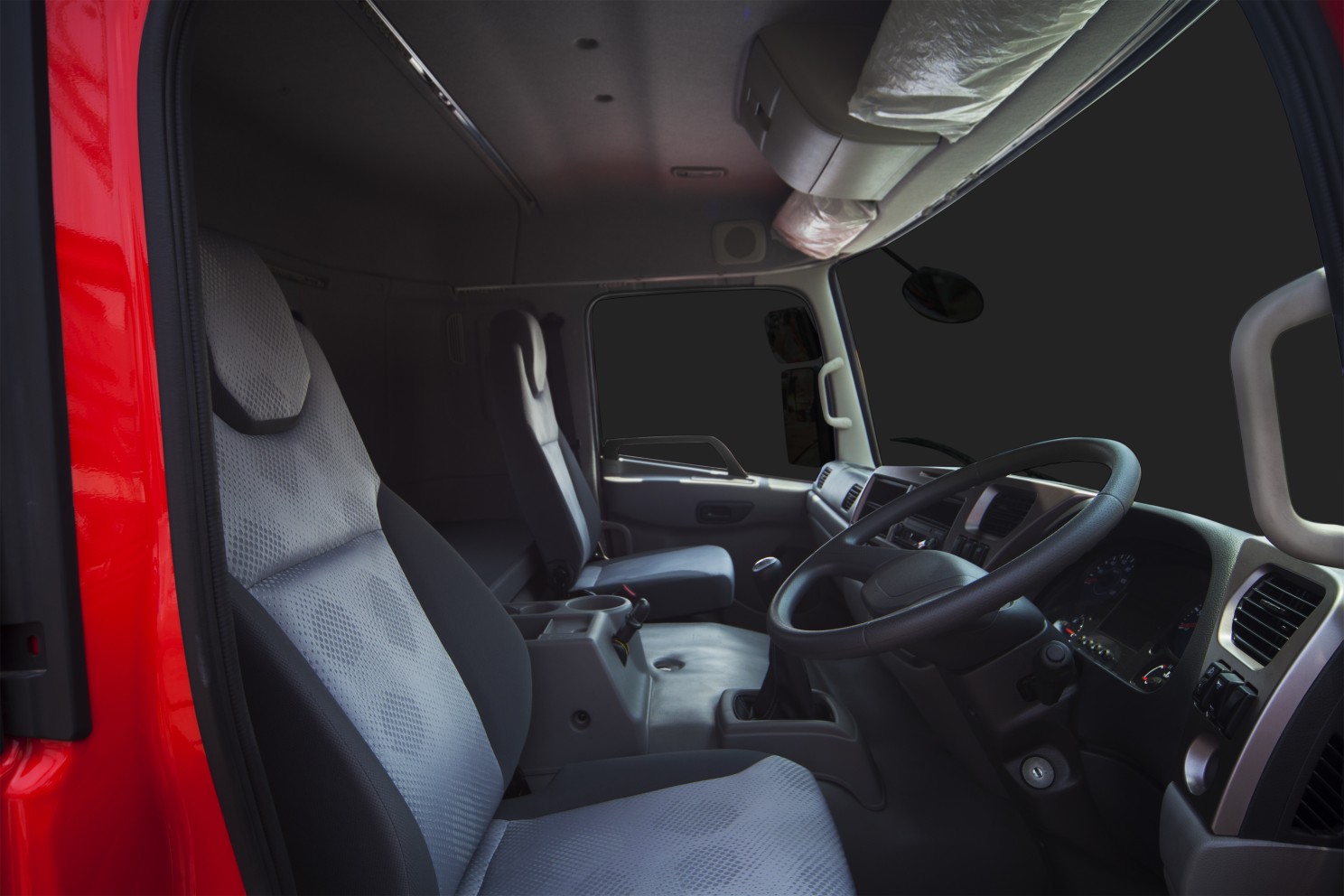
Susie Jones
Cinci sfaturi de top pentru a face din cabina camionului dvs. o casă
Creat: 22.08.2024
•
Actualizat: 22.08.2024
În calitate de șofer de camion, petreceți multe ore pe drum, ceea ce poate fi adesea obositor și monoton, așa că, în mod firesc, ați dori ca mediul dvs., zona în care staționați cel mai mult timp, să se simtă ca o a doua casă. Prin urmare, mulți șoferi tind să își personalizeze și să își decoreze cabinele, dar care sunt cele mai bune modalități de a vă face cabina de dormit să se simtă ca o casă departe de casă? Am compilat cinci sfaturi de top pentru a vă ajuta pe parcurs.
Decorațiuni
Una dintre cele mai bune modalități de a vă personaliza cabina este să adăugați decorațiuni care să vă amintească de casă. De asemenea, decorațiunile vă permit să adăugați stil și culoare.
Lenjerie de pat și perne - Adaugă o notă personală lenjeriei de pat și pernelor tale, alegând unele care au o culoare sau un model care îți place. Acest lucru vă poate face cabina să se simtă puțin mai confortabilă și mai puțin stagnantă.
Huse pentru scaune - Husele pentru scaune vin adesea în diferite culori, modele și materiale care vor aduce puțină viață cabinei dvs. Acestea nu numai că vor face cabina să pară mai primitoare, dar vor proteja și interiorul de uzură, murdărie și deversări. Amazon tinde să aibă o selecție mare de culori disponibile.
Covoare, perdele și nuanțe - Alegerea unor covoare și perdele poate transforma interiorul cabinei dvs. Perdelele nu numai că vor adăuga o valoare estetică plăcută, dar vă vor ajuta și să obțineți un somn decent.
Fotografii, postere și lucrări de artă - Aceste obiecte nu ocupă mult spațiu în cabina ta și o pot face să se simtă instantaneu ca acasă. Folosiți cârlige de comandă pentru o instalare fără daune.
Divertisment: La sfârșitul zilei de condus, relaxați-vă ca acasă, uitându-vă la televizor, la un DVD sau transmițând ceva pe laptop. Veți avea nevoie de WiFi pentru a putea face streaming; nu uitați să consultați [pagina cu hărți] (https://snapacc.com/map/) pentru a afla ce stații oferă acest serviciu.
Alternativ, creați un hotspot pentru smartphone care va utiliza datele telefonului pentru streaming. Cărțile și revistele sunt o altă modalitate excelentă de a vă distra după o zi lungă de condus. Uneori, un simplu apel video către prieteni sau familie vă poate relaxa și vă poate face să vă simțiți ca acasă.

Confort
Petreci mult timp în cabină, așa că este important să nu faci compromisuri în ceea ce privește confortul tău. De ce să nu investiți în următoarele:
Topper pentru saltea - Un somn decent este esențial pentru siguranța dumneavoastră și a celorlalți. Investind într-o saltea bună, vă veți asigura că aveți o zonă confortabilă în care să dormiți.
Scaun ergonomic pentru șofer - Cea mai mare parte a timpului o veți petrece pe scaunul șoferului, așa că este important să vă asigurați că acesta este cât se poate de confortabil și de susținător. Investiți într-un scaun ergonomic pentru șofer sau într-o pernă care să vă susțină spatele în timpul acelor ore lungi.
Perne și pături suplimentare - După cum s-a menționat mai sus, cumpărarea de lenjerie de pat și perne într-o culoare sau un model care vă place poate face cabina să se simtă mai mult ca o casă. Luați în considerare achiziționarea de perne și pături suplimentare pentru a adăuga o notă și mai personală cabinei și confort maxim.
Bucătărie/aparate
Adăugarea unui minifrigider sau a unui cuptor cu microunde în cabina dvs. vă poate permite să pregătiți mâncarea ca acasă, astfel încât să nu fiți nevoit să vă bazați pe stațiile de camioane și pe mâncatul în oraș. Vă sugerăm să vă gândiți la articolele de care ați avea nevoie în această zonă, de exemplu, dacă sunteți un băutor de cafea, încercați să procurați un mic aparat de cafea. Utilizarea bucătăriei și a aparatelor electrocasnice nu numai că vă va împiedica să cheltuiți o avere pe mesele în oraș, dar vă va îmbunătăți și starea generală de sănătate.
Mențineți lucrurile curate și ordonate
Viața într-un spațiu mic poate deveni destul de dezordonată foarte repede. Investirea de timp și efort pentru a avea o rutină de curățenie regulată poate face minuni pentru sănătatea dumneavoastră mentală și vă poate permite să lucrați mai eficient și mai eficace. Asigurați-vă că aveți zone dedicate pentru obiectele dvs. și ProDrivers are câteva sfaturi excelente pentru a păstra totul organizat.
Cum se descurcă șoferii de camion cu plictiseala?
Plictiseala nu numai că afectează satisfacția profesională, dar poate afecta și siguranța la locul de muncă. Există multe modalități prin care șoferii de camion se pot distra în timp ce sunt pe drum.
Muzică și podcasturi: Muzica este o modalitate excelentă de a-i distra pe șoferi în timpul călătoriilor lungi. Crearea unei liste de redare a melodiilor preferate pe care să le ascultați poate reduce instantaneu plictiseala. Podcasturile sunt o modalitate excelentă de a schimba lucrurile, multe dintre ele pot oferi sfaturi, pot ajuta la învățarea unei noi abilități sau pur și simplu pot distra.
Întinderea picioarelor: Oprirea și coborârea din taxi pentru a vă întinde picioarele poate alunga instantaneu plictiseala. De asemenea, opririle regulate vă pot stimula energia.
Unde dorm șoferii de camioane?
De la 1 noiembrie, șoferii de camioane din Regatul Unit care fac pauze săptămânale regulate în cabine trebuie să le facă acum în zone de odihnă adecvate. Din cauza faptului că există puține astfel de locuri, unii șoferi și-au făcut odihna în locuri de parcare care sunt adesea nesigure. Prin urmare, este vital să găsiți un loc sigur și liniștit unde să parcați pentru a vă odihni sau pentru a vă odihni bine noaptea. Folosind aplicația noastră intruck sau accesând [pagina cu hărți] (https://snapacc.com/map/) puteți găsi o parcare pentru camioane în apropierea dumneavoastră și puteți vedea ce facilități sunt oferite.
Cum se descurcă șoferii de camion cu singurătatea?
Deși există multe avantaje în a fi șofer de camion, unul dintre dezavantajele acestei industrii poate fi singurătatea. Aceasta poate fi o problemă pentru mulți șoferi care se simt izolați de natura muncii lor. Planificarea de a păstra legătura cu prietenii și familia poate oferi șoferilor un impuls atunci când sunt pe drum. Forumurile de camioane, grupurile Facebook și camerele de chat sunt excelente dacă doriți să faceți parte din comunitatea camioanelor. [All Trucking] (https://www.alltrucking.com/faq/how-beat-being-lonely-truck-driver-road) are câteva sfaturi fantastice pentru a vă ajuta să combateți singurătatea în calitate de camionagiu pe drum.
Pentru ca cabina camionului dvs. să se simtă ca acasă este nevoie de puțin efort și creativitate, dar beneficiile acestui lucru vă vor face călătoriile lungi mult mai ușoare. Este important să vă amintiți că micile detalii pot face o mare diferență în spațiul dvs. de locuit, iar utilizarea sfaturilor de mai sus vă va permite să îl faceți confortabil și primitor. Cum vă faceți cabina să se simtă ca o casă departe de casă?



